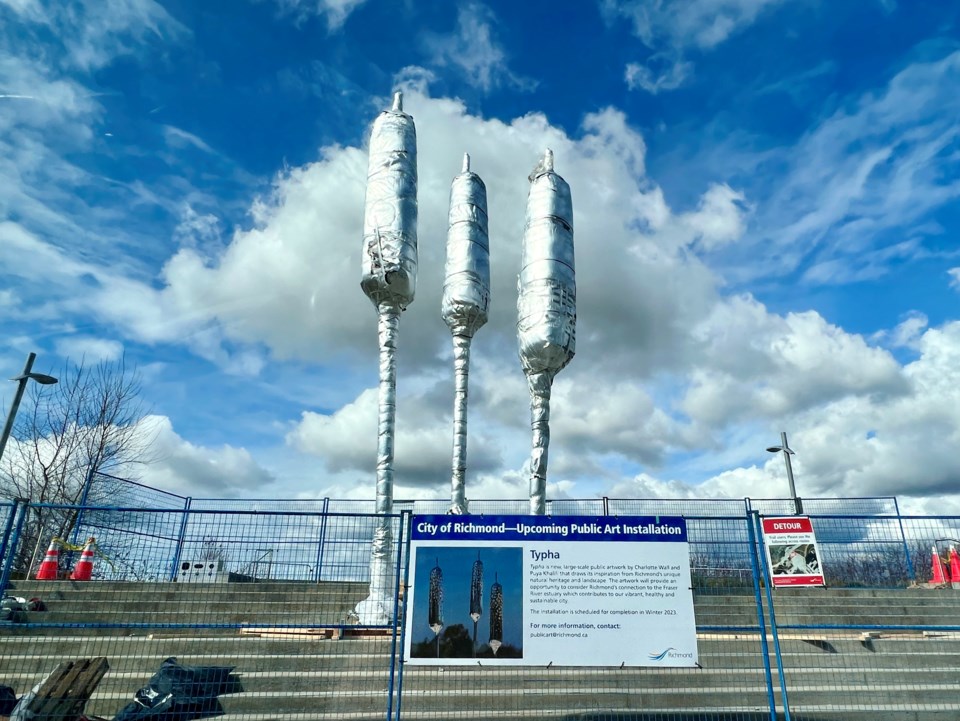A public art piece originally planned to be completed in 2019 will finally be unveiled at the end of this month.
Three tall cattail-shaped objects were recently spotted atop a staircase on Hollybridge Way, just beside the Richmond Olympic Oval. Under the silver wrapping are the three components of Vancouver artists Charlotte Wall and Puya Khalili’s Typha.
The new art piece had been five years in the making since it was endorsed by the city council in 2018. It had a budget of $320,000 from the Oval Precinct Public Art capital budget.
According to city spokesperson Kim Decker, the total cost of the project will be closer to $340,000 due to “inflation and rising costs.”
At the time, Wall had hoped it would be done by the summer of 2019.
In an artist salon at the Richmond Art Gallery (RAG) held in June 2021, the artists explained that the project was delayed due to the COVID-19 pandemic.
The sculptures, which are fabricated by hammering sheets of metal into the desired form, had to be made in China as it was one of the only places in the world with experts in the field. Although most of the project was locked and loaded by the time COVID-19 hit in 2020, the artists had no choice but to wait as China ground to a halt in efforts to get the pandemic under control.
Casting, said Wall, was not an option as it would “create a much heavier piece that would also be compromised in terms of structure.”
“It was just a matter of waiting until China could get going,” she said.
But the wait might be over soon. According to Decker, the piece is expected to be completed by the end of March.
“Typha will mark the completion of the Oval Precinct and Surrounding Area Public Art Plan, making the area an important collection of a number of high-profile and diverse works of public art in Richmond,” she said.
Typha as a motif
The metal sculptures mimic the way the plant grows and are made of stainless steel with a mirror-like finish. The interiors are painted golden yellow and will glow warmly when it lights up in the evenings.
A bench will also be placed in the area.
The typha was chosen as a motif as it is an indigenous plant in the area with a long history in Indigenous culture. It is also usually seen around water.
“… we wanted to sort of use this plant as a symbol for this existence of water and to talk about the (Fraser) river,” explained Khalili at the 2021 RAG event.
Although some councillors were initially concerned about the sculpture’s location, as it will partially obstruct the view of the river, it seems that it is here to stay.
“A major artwork at this landmark location provides an opportunity to reveal the connection of Richmond to the Fraser River estuary and Pacific flyway,” explained Decker.
- With files from Maria Rantanen



